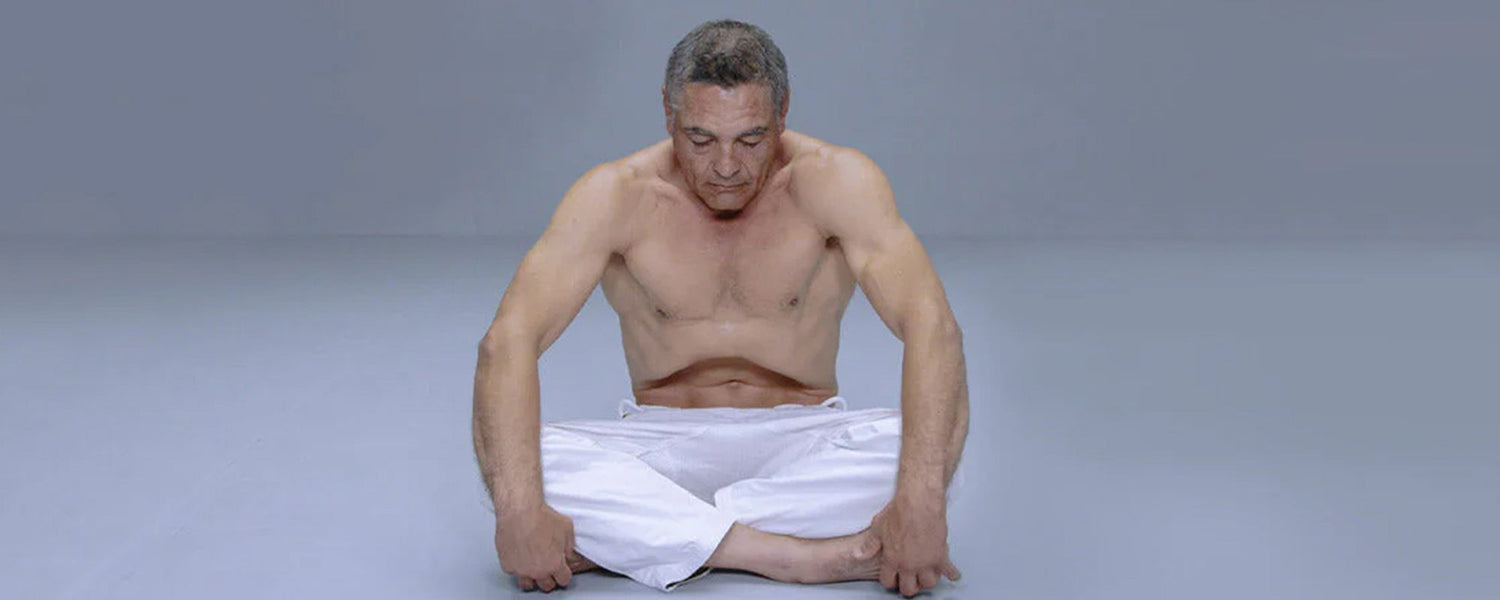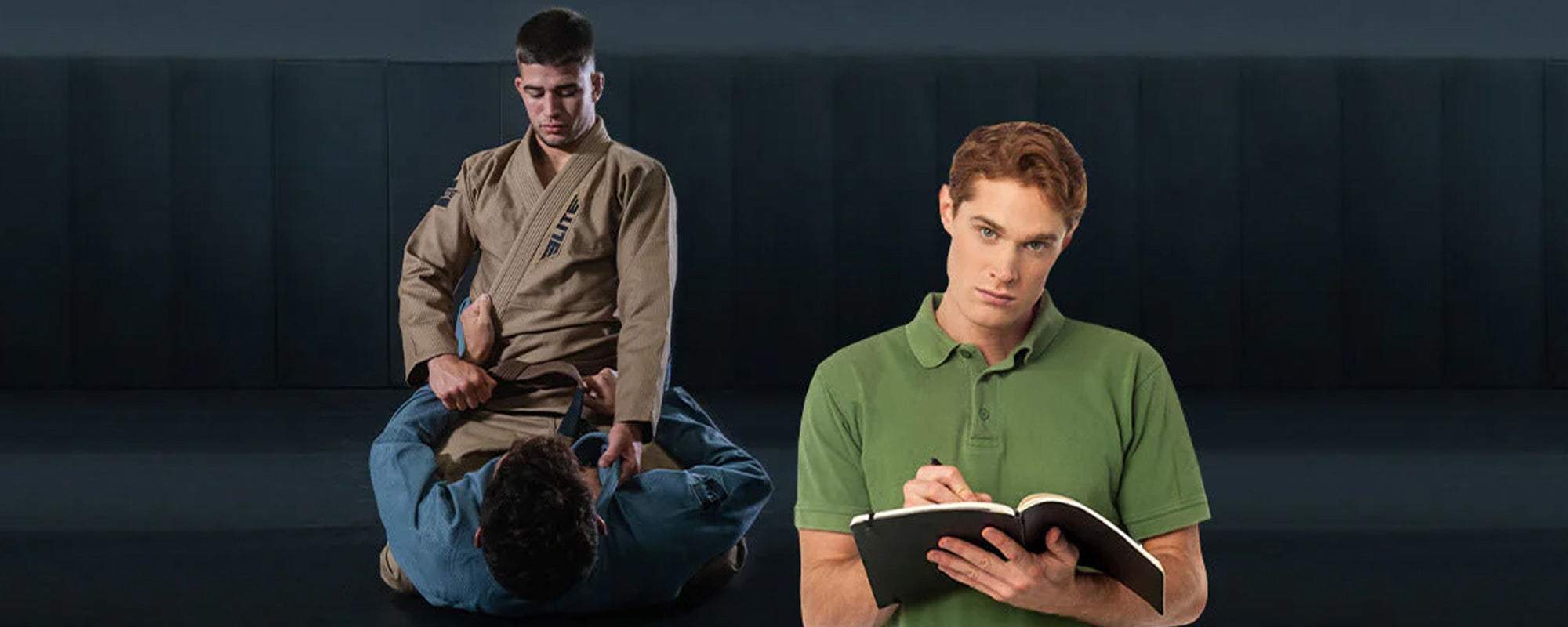Table of content
Breathing exercises are a fundamental part of each martial art training. However, people who grapple don’t pay much attention to breathing techniques (especially White Belts). Learning how to breathe in the correct way is the most important Jiu-Jitsu lesson. This article will give you complete insight and guidance about the different breathing techniques necessary for BJJ.
1. What Constitutes Good Breathing for BJJ?
When it comes to good breathing, inhaling through the nose and drawing from the diaphragm (via mouth) rather than taking air in through the mouth and drawing from the chest (via the nose).
Let’s look at breathing through the nose. The air we inhale into our lungs through our noses is warmed, cleansed, moisturized, and also contains nitrous oxide. Nitrous oxide infuses through the nose, increasing the quantity of oxygen the body absorbs from the blood.
The other benefit of nasal breathing is that it serves as a built-in breathing restriction, preventing us from breathing in excessive amounts of oxygen.
But hold on! Isn't more oxygen beneficial?
Indeed, oxygen is important. But, C02 is also crucial, especially in fighting mode.
When we breathe, CO2 is not merely a waste product. It is essential for our body's capacity to absorb oxygen from the blood and deliver it to the tissues, where it is needed for energy generation.
Therefore, when we breathe in and out too quickly, we expel too much carbon dioxide, which reduces our body's capacity to absorb the oxygen we require.
2. Breathing Exercises
2.1. Sit Aside and Breathe
You will improve your diaphragm control, become more aware of your breathing mechanics, and begin to establish a tolerance to CO2 by performing this exercise.
You'll be able to breathe more easily both on and off the mat after continuously practicing this exercise.
This workout has the advantage of exerting almost no stress on the body. Therefore, it may be done every day, many times a day.
Here’s how you can do it:
- Find an area that is peaceful, pleasant, healthy, and filled with green surroundings, where you can sit upright without being disturbed.
- Set a ten-minute timer, sit straight up or cross-legged, close your eyes, and just breathe through your nose.
- Slowly check for stiffness in your head, face, collar, jaw, and shoulders. Try not to relax. Simply focus on how you are feeling. Continue in this manner until you reach the stomach, making your way down the body.
- Put one hand on the chest, just above the sternum, with very little pressure after scanning the body for a few minutes. Use the other hand to repeat the process.
- By keeping track of where the pressure in your hands is felt, you may determine where you are breathing.
- It's nice if the hand on your chest doesn't feel pressured. Attempt gently to breathe from the diaphragm if you may. There should be absolutely no movement in the chest.
- When you are solely breathing from your diaphragm, you should intentionally take ever-smaller breaths. The goal is to make the diaphragm's motions so subtle that you hardly even detect them.
- You should feel a minor need to breathe at the same moment. That's great. The amount of CO2 that accumulates within your body is what causes us to begin developing a tolerance to CO2.
- It's natural and acceptable if the need to breathe gets excessively strong and you experience diaphragmatic twitching.
- The objective is to sustain a mild need to breathe during the entire 10 minutes.
2.2. Breathe Hold While Walking
Another way to improve breathing while BJJ training is to hold your breath while walking.
Here’s how you can do it:
- Set up a 25-30 minute walk time.
- Similar to the sitting exercise, concentrate on any tightness in your body while simply inhaling through your nose.
- Similarly, gradually minimize breathing until you are just using your diaphragm to breathe, causing a little need to breathe. Spend ten minutes on this exercise.
- Breathe normally for 30 to 60 seconds after the 10-minute mark. Next, hold your nose while exhaling comfortably. You must hold your breath after exhalation.
- Then, while maintaining your calmness, take as many steps as you can safely until you get a sudden, intense need for air. Release the hold of your nose, and start breathing normally again through your nose.
- Do at least five breath holds.
2.3. Breathing and Stability Movement
To develop movement for BJJ, using stability balls is recommended. Practice moving with a stability ball and breathing with the nose and diaphragm during the whole movement. Continue movement with relaxed shoulders, neck, and face, and don’t over breathe.
During the movement, when you feel you need mouth breathing just slow down, recover your breath, and start the movement again.
This is a great way to learn how to breathe with your nose while competing and rolling.
2.4. Control Your Breath While Training
We often take breathing for granted. However, when we're stressed out, it is really helpful in calming us down. Rolling or competing is one of the few activities that might make you feel more anxious.
From a physiological perspective, breathing aids in the exchange of carbon dioxide and oxygen. But breathing also has an effect on other organ systems. Your heart rate, as well as your mood and level of relaxation, may all be changed by controlling your breathing. Each breath consists of three primary components: inhaling, holding your breath and exhaling. The ultimate objective is to provide your tissues with oxygen. The fact that tissues demand substantially more oxygen than normal during stress is one reason why your regular breathing cycle is not so effective.
Your grappling abilities will improve as you learn to better regulate your breathing. However, you'll also learn how to detect irregular respiration in your opponent. And make use of that to your benefit. Therefore, mastering BJJ breathing will benefit both your entire game and your ability to make a difference.
3. Rickson Gracie’s Unique Breathing Technique
When practicing Jiu-Jitsu, Rickson Gracie and every member of the Gracie family use a unique breathing technique called percussive breathing. This entails taking a regular breath in and then exhaling quickly and repeatedly (saying shh, shh, shh). In actuality, these are rhythmic diaphragmatic contractions.
For many years, this was one of the Gracie family's best-kept secrets.
The volume of air exchanged via the lungs increased using percussion breathing techniques. More oxygen enters your body when you breathe deeply.
The term "breath with sound and rhythm" refers to percussion breathing. It's harder than it seems to maintain the rhythm of breathing and exhaling. Longer exhalations indicate that your cardiovascular endurance is being strengthened.
Breathe in slowly and deeply while employing accordion breathing. Lateral chest breathing is known as accordion breathing. Consider your ribcage to be an accordion. The accordion extends laterally during inhalation and contracts laterally during exhalation.
Exhale for five beats while using rhythmic breathing (saying shh, shh, shh).
Here, you can observe Rickson Gracie's rhythmic breathing during exercise:
4. BJJ Breathing Techniques for When You're Being Crushed by Your Opponent on the Ground
One of the toughest situations is being stuck on the bottom with your opponent while being unable to breathe. Usually, this is followed by panic, anxiety, and submission.
This video describes how to breathe when you are trapped by an opponent.
The video describes breathing in three parts.
- Physical Preparation
- Psychological Changes
- Technical Responses
4.1. Physical Preparation
Some people believe that they would breathe more easily when a huge, heavy person is resting on their chest if they merely had stronger abs or better cardio.
Yes, having stronger abs and cardio will help. Gradually increase your leg lifts, crunches, running, swimming, and time spent on the elliptical machine.
In fact, some forms of karate go so far as to teach breathing while keeping a very tight core by having students bounce up and down on each other's bellies with a heel firmly placed on the diaphragm.
So physical conditioning plays a vital role when encountering such situations.
4.2. Psychological changes
When under stress, many people just stop breathing or their breathing patterns get disturbed. To overcome this, you will have to make some psychological adjustments. Change your thoughts of fear and anxiety. Exercise breathing techniques on a daily basis, this would be so helpful in facing such situations.
Whenever you are trapped by an opponent during grappling, it is essential to continue breathing normally, that is the key.
4.3. Technical Responses
There are some technical answers that will fix your breathing in uncomfortable situations.
Get to Your Side to Breathe Easier
When your opponent is pressing his weight into your diaphragm when you are flat on your back in BJJ, it is quite difficult to breathe. You will suffer if you are flat and the opponent puts pressure on your diaphragm.
Open Your Mouth Wide to Breathe
If you are being choked by opponent BJJ Gi, try to breathe by opening your mouth wide. However, when you fully open your mouth, you have a larger surface area of Gi to draw that air through. It may not be simple, but it is far less challenging.
5. Benefits of Breathing Exercises
There are several advantages to practicing breathing exercises
5.1. Reduce Stress
Breathing exercises offer a great method to relax during stressful situations. If you have practiced BJJ for even a single day, you are aware of how difficult it can be to grapple with a resistant opponent. Therefore, it's crucial to manage your breathing since it has a direct impact on your ability to make decisions and overall mental health.
5.2. Mindfulness
The best thing you can do when practicing BJJ is to be mindful of breathing. The worst thing you can do is to stop breathing every few seconds. Weirdly, when you get into vulnerable situations, most people frequently miss normal breathing patterns. This is especially true for Brazilian Jiu-Jitsu novices.
Breathing exercises provide mindfulness, so you don’t miss breathing when trapped in a stressful situation.
6. Conclusion
Learning proper breathing exercises should be a crucial part of any martial arts training in addition to regular training since they help the body to relax. Proper breathing during training helps you lower blood pressure, increase clarity and focus, and expand lung capacity. If you are a BJJ practitioner, make breathing exercise a part of your routine.
Photo Credit: @ricksongracie











Leave a comment
This site is protected by hCaptcha and the hCaptcha Privacy Policy and Terms of Service apply.